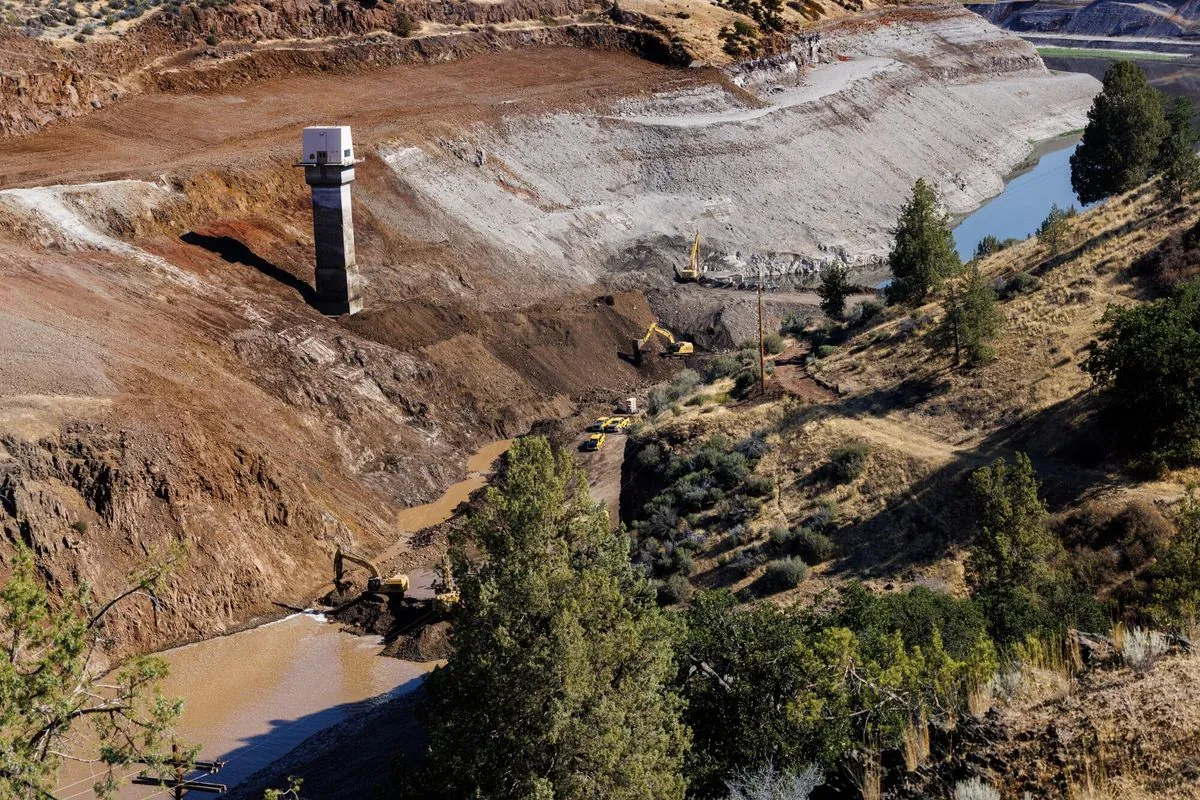Historic Klamath River Dam Removal Nears Completion, Promising Salmon Revival
Final dams on the Klamath River are being breached, marking the culmination of the largest dam removal project in U.S. history. This effort aims to restore salmon habitats and natural river flow after a century of obstruction.

In a landmark environmental restoration effort, workers are dismantling the final barriers on a crucial stretch of the Klamath River. This action marks the culmination of the most extensive dam removal project in United States history, paving the way for salmon to navigate freely through a significant watershed near the California-Oregon border for the first time in over a century.
Excavators are being utilized to remove rock dams that have been redirecting water upstream of two major dams, Iron Gate and Copco No. 1, both of which have already been largely dismantled. This operation is expected to conclude by the evening, providing salmon access to vital spawning grounds just in time for the fall Chinook salmon season.

The Klamath River, stretching 257 miles through Oregon and northern California, was once the third-largest salmon-producing river on the West Coast. However, the construction of dams by PacifiCorp between 1918 and 1962 disrupted the river's natural flow and the lifecycle of the region's salmon, which typically spend most of their lives in the Pacific Ocean before returning to their natal rivers to spawn.
Frankie Myers, vice chairman for the Yurok Tribe, expressed the significance of this event:
"Our sacred duty to our children, our ancestors, and for ourselves, is to take care of the river, and today's events represent a fulfillment of that obligation."
The Klamath Basin is home to six federally recognized Native American tribes, for whom salmon hold immense cultural and spiritual importance. The dam removal project represents the culmination of decades of advocacy by these tribes and environmental groups.
This initiative is part of a broader national movement to restore rivers to their natural state and revitalize ecosystems for fish and other wildlife. As of February 2024, over 2,000 dams had been removed in the U.S., with the majority occurring in the last 25 years, according to the advocacy group American Rivers.
The project, estimated to cost approximately $500 million, is funded by taxpayers and PacifiCorp ratepayers. While the dam removals will not significantly impact the power supply, producing less than 2% of PacifiCorp's energy at full capacity, they are expected to have a substantial positive effect on the river's ecosystem.
However, the project is not without its critics. Oregon state Sen. Dennis Linthicum, a Republican, has voiced concerns about the loss of important sites for water storage, flood control, and fire prevention.
As the river begins its journey towards restoration, experts remain cautiously optimistic about the timeline for salmon recovery. Michael Belchik, senior water policy analyst for the Yurok Tribe, expressed hope for early successes, while Mark Bransom, chief executive of the Klamath River Renewal Corporation, noted that it could take time to undo a century's worth of environmental impact.
The Klamath River dam removal project stands as a testament to the power of persistence in environmental advocacy and the potential for large-scale ecosystem restoration. As the river flows freely once again, it carries with it the hopes of Native American tribes, environmentalists, and local communities for a revitalized watershed and the return of its iconic salmon populations.


































